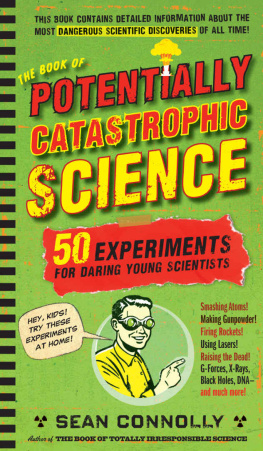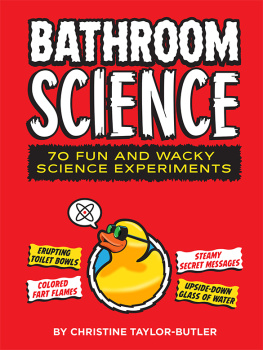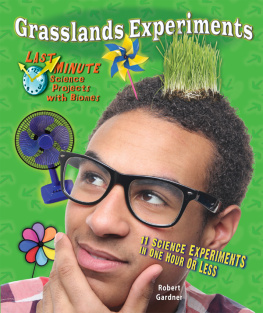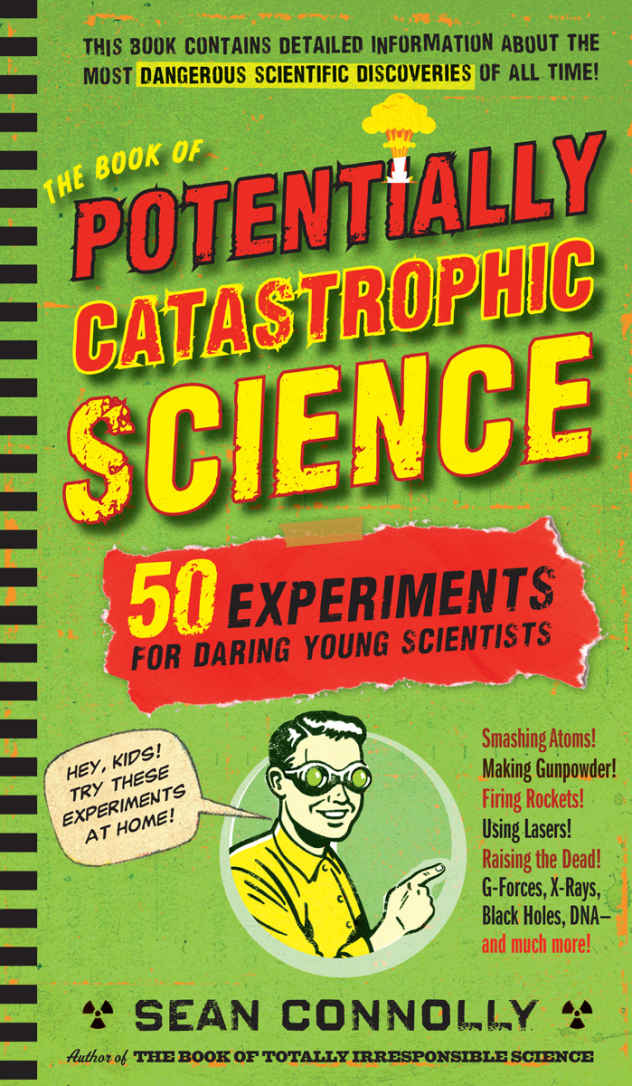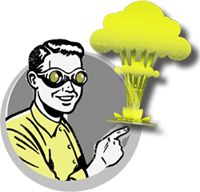Sean Connolly - The Book of Potentially Catastrophic Science: 50 Experiments for Daring Young Scientists
Here you can read online Sean Connolly - The Book of Potentially Catastrophic Science: 50 Experiments for Daring Young Scientists full text of the book (entire story) in english for free. Download pdf and epub, get meaning, cover and reviews about this ebook. year: 2010, publisher: Workman Publishing, genre: Romance novel. Description of the work, (preface) as well as reviews are available. Best literature library LitArk.com created for fans of good reading and offers a wide selection of genres:
Romance novel
Science fiction
Adventure
Detective
Science
History
Home and family
Prose
Art
Politics
Computer
Non-fiction
Religion
Business
Children
Humor
Choose a favorite category and find really read worthwhile books. Enjoy immersion in the world of imagination, feel the emotions of the characters or learn something new for yourself, make an fascinating discovery.
- Book:The Book of Potentially Catastrophic Science: 50 Experiments for Daring Young Scientists
- Author:
- Publisher:Workman Publishing
- Genre:
- Year:2010
- Rating:3 / 5
- Favourites:Add to favourites
- Your mark:
The Book of Potentially Catastrophic Science: 50 Experiments for Daring Young Scientists: summary, description and annotation
We offer to read an annotation, description, summary or preface (depends on what the author of the book "The Book of Potentially Catastrophic Science: 50 Experiments for Daring Young Scientists" wrote himself). If you haven't found the necessary information about the book — write in the comments, we will try to find it.
Its never been more important to engage a childs scientific curiosity, and Sean Connolly knows just how to do itwith lively, hands-on, seemingly dangerous experiments that pop, ooze, crash, and teach! Now, the author of The Book of Totally Irresponsible Science , takes it one step further: He leads kids through the history of science, and then creates amazing yet simple experiments that demonstrate key scientific principles.
Tame fire just like a Neanderthal with the Fahrenheit 451 experiment. Round up all your friends and track the spread of disease using body glitter with an experiment inspired by Edward Jenner, the vaccination pioneer whos credited with saving more lives than any other person in history. Rediscover the wheel and axle with the ancient Sumerians, and perform an astounding experiment demonstrating the theory of angular momentum. Build a simple telescopejust like Galileosand find the four moons he discovered orbiting Jupiter (an act that helped land him in prison). Take a less potentially catastrophic approach to electricity than Ben Franklin did with the Lightning Mouth experiment. Re-create the Hadron Collider in a microwave with marshmallows, calculator, and a rulerit wont jeopardize Earth with a simulated Big Bang, but will demonstrate the speed of light. And its tasty!
By letting kids stand on the shoulders of Aristotle, Newton, Einstein, the Wright brothers, Marie Curie, Darwin, Watson and Crick, and more, The Book of Potentially Catastrophic Science is an uncommonly engaging guide to science, and the great stories of the men and women behind the science.
Sean Connolly: author's other books
Who wrote The Book of Potentially Catastrophic Science: 50 Experiments for Daring Young Scientists? Find out the surname, the name of the author of the book and a list of all author's works by series.

